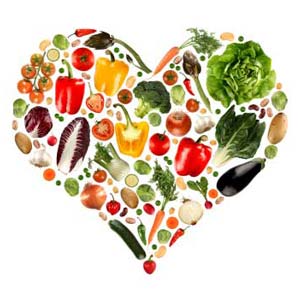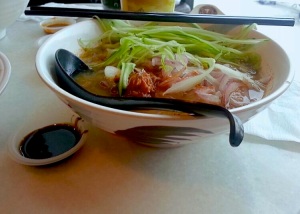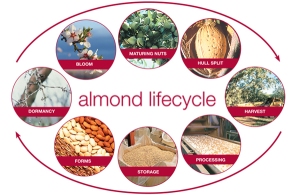

Credit (respectively): From thirstygirl.com & from prosar.com
I was a very active kid throughout my whole life playing a lot of sports and dancing, which helped me stay fit. However, as I began taking the International Baccalaureate program during my junior year of high school I had less time to stay active because I had a heavy work load, and this caused me to gain a lot of weight within the next two years.
Finally after graduating, I made a promise and goal to myself at the start of my summer vacation that I would spend these two months getting active again, starting with being healthier with my food choices.
So what is the definition of being healthy? The World Health Organization defined “health” as “a state of complete physical, mental and social well-being and not merely the absence of disease or infirmity.”
I spent those two months working out every single day and eating healthy, with the occasional little cheat day. As I began my journey to becoming fit and healthy again, I was able to learn more about how much better organic food was for my body and this is where my manifesto position came from, which is why it is important to me. As Jean Anthelme Brillat-Savarin who is known for revitalizing modern gastronomes wrote in his Aphorisms of the Professor, “The discovery of a new dish does more for human happiness than the discovery of a star.” and this relates to how my new found “discovery” of an amazing way of eating has brought me a lot of happiness.
As the Centers for Disease Control and Prevention states, “Many people are trying to eat foods that are produced with minimal processing.” and this is what many Americans are trying to do with the food that they purchase and consume. What is organic food exactly? Well, organic food are basically crops and animals that have not been harmed by chemicals such as pesticides, genetically modified organisms (GMOs), and harmful fertilizers. As Helpguide states, “Genetically modified organisms are plants or animals who DNA has been altered.” This would mean that their animals would have been given antibiotics, and even growth hormones. Animals that are not raised organically in a more natural and open environment, are in crowded living conditions, which is a major cause of animal suffering and sicknesses. I’m sure none of you would want to eat meat from an animal that could have been sick, nor would we honestly even know when we buy meat from a conventional supermarket. Did you know that many people suspect that genetically modified food decreases your immune system and cause allergies?
Organic fruit and vegetables have up to fifty percent more antioxidants, and many scientists believe that this can cut the risk of heart disease and even cancer! Not to mention the higher amount of vitamins and minerals that it has. Eating organic food has improved peoples immune system, and they are more likely to not be overweight compared to those who are eating all those unhealthy processed food.
Were you ever curious about why organic fruits and vegetables spoiled a lot faster compared to the fruits and vegetables from supermarkets? Well that’s because the produce from the supermarkets are typically irradiated and have been given preservatives. This basically extends the food life of the produce, and kills bacteria. Irradiation methods typically use radio active materials. Did you know that in the U.S. “the average distance a meal travels from the farm to the dinner plate is over 1,500 miles” which “uses a lot of fossil fuels and emits carbon dioxide into the air” which is extremely bad for our environment?
As I began my journey of being more healthy and fit, I began to learn new healthy recipes, and started eating more raw organic vegetables. However, just like everyone else, there were those days where I craved some junk food. I have the terrible tendency to want to munch on something when I’m bored. However to avoid doing so, I would make sure to drink a lot of water, especially because there are times when you think you’re hungry, but in reality you are actually just thirsty. I cut out every other type of drink, especially sodas and juice bottles which contain a lot of sugar from the supermarket, as this was the easiest start for me on my journey compared to completely cutting out junk food. This is because I love my food more than drinking sweet drinks.
The next step on my journey was going to the gym. After barely working out for two years during junior and senior year, you can only imagine how unfit and lazy I was. So to give me some added motivation and a really big push, my parents were kind enough to hire me a personal trainer. A personal trainer typically costs around $50 to $80 per session, however it is always better to get a packaged deal as this is usually cheaper and more worth it. I checked 24 Hour Fitness prices for their personal trainers and their starter package of three 50 minute sessions costs $99 which is such a great deal!
On my first day with my trainer, I was only about twenty minutes into the workout and I was honestly ready to pass out, so I had to stop my workout for the first day. However, after each session from that day onwards, plus eating a healthy meal of a piece of organic grilled chicken breast or salmon and the fresh vegetables we had, I began to build up my endurance and energy, which helped me to workout with my trainer for two hours every single day. I know some of you are thinking “Well not everyone can afford a personal trainer” or “I don’t want to waste money on a personal trainer.” However, compared to how much a personal trainer costs, how much more do you think it will cost to pay for medicine if you became diabetic, which you will have to take for the rest of your life? Having a personal trainer it a great starting point, and in just a couple of weeks you honestly learn a lot from them, and after that you honestly don’t even need to have them anymore once you know the basic routines that they have done with you and you are motivated.
When I began studying here at Chapman University, one of the first things I had to check out was our very own Farmers and Artisans market which is right across from Dodge! When going to a farmers market I believe it is important that you know where and how their produce is grown, which is usually only a few hours away. I interviewed some of the vendors at the Farmers and Artisans market here at Orange to find out more about their organic produce and why they believe we should support our local farmers markets. I spoke to the Carlsbad Aquafarm vendor who told me that their eco-friendly shellfish and culinary seaweed is produced in Carlsbad, CA. The way that they catch their fresh catches are through methods such as shore-based seawater tanks which have a minimal impact on marine habitats and water quality. I spoke to another vendor called Guerrilla Beekeepers who produce honey and honey based products in Silverado Canyon, which is not too far away from our campus. Did you know that local organically grown raw honey that is made by bees near your environment contain properties that can treat seasonal allergies because it will contain small amounts of the specific pollens that a person may be allergic to? Plus, they collect the bees from unwanted areas such as around our homes and workplace.
The great part about each different farmers market is that you are supporting the actual farmers and people who help to produce the product, instead of the money going through different channels before actually reaching the farmers, leaving them with a small salary and less motivation to give us the best produce. You can practically buy all your produce at your local farmers market which will have a large selection of vegetables, fruits, mushrooms, nuts, honey, free range eggs, hormone free poultry and beef and milk, freshly baked goods, sometimes even fish from a local aqua farm, and many other things depending on which one you go to! You never have to worry about whether a vendor is the real deal or not, at least in California where they are all certified and inspected by the county agricultural commissioner, which means that they are genuine farmers who are selling their products directly to us. Not to mention that these fresh, local, and high quality produce have a small carbon footprint!
It was amazing to talk to different vendors and learn about their journeys, and as they further informed me of health benefits of each of their produce, which motivated me even more to stick with organic food as much as possible. Even though organic food is slightly more expensive than the produce you get at supermarkets, I believe that paying just a little bit more for your produce is fine because of how much better it is for you, the animals, the farmers, and the environment.
Making such a change to my diet and daily activities was quite a challenge at first, however with the proper motivation and the ability to access organic food from farmers markets or a local supermarket like the one we have right here in Orange, I have been able to continue on with my journey to become a healthier and happier person. The list goes on and on for the amazing health benefits that each different produce has, so I encourage you all to at least visit your local farmers market where I promise you that you will not regret it!
I have come a long way since the summer before coming to university this year, by eating clean and healthy, as well as regularly exercising, I was able to lose over 20 pounds in 2 months. I have never felt more content and happy with where I am today, and hope to continue on this journey to becoming an even healthier and happier me.
Here are a few tips that you can do to start yourself an amazing journey with going organic:
1. Become familiar with the Clean 15 and the Dirty Dozen. This is updated every year to give you the top fruits and vegetables that contain the least amount of pesticides, and the ones that contain the most pesticides. So if you are an apple lover like myself, I suggest starting off with switching to organic apples since apples are part of the Dirty Dozen!
2. Try having one meatless meal every week. This will lower the grocery bill, and instead you can try out some healthy vegetarian dishes with your organic produce!
3. Switch your white bread with 100 % whole wheat/grain bread! Whole grains are absorbed slower than white bread (processed flour that lacks the essential nutrients of fiber-rich bran and vitamin loaded germ), which keep you feeling fuller and raise your glucose and insulin levels less.



